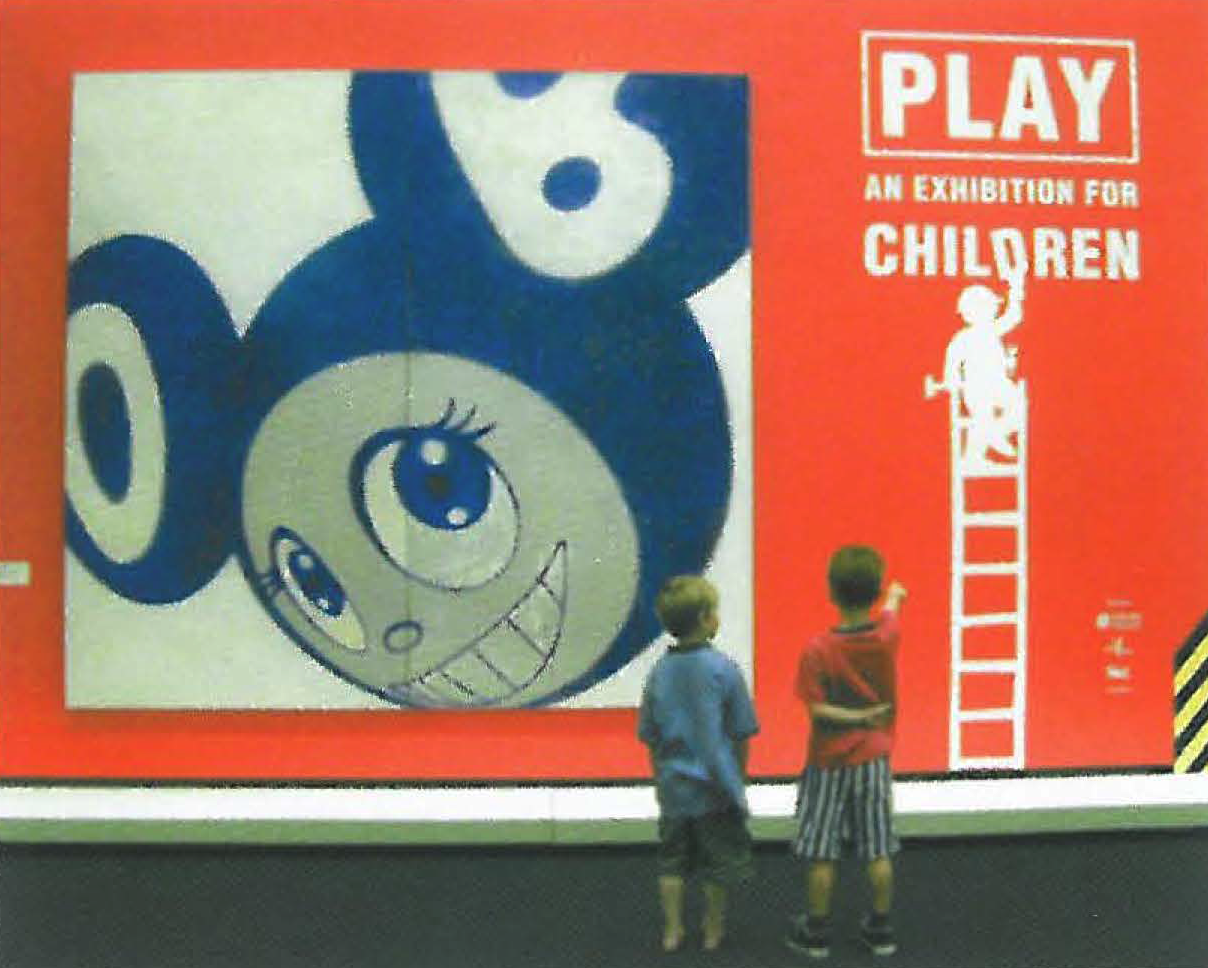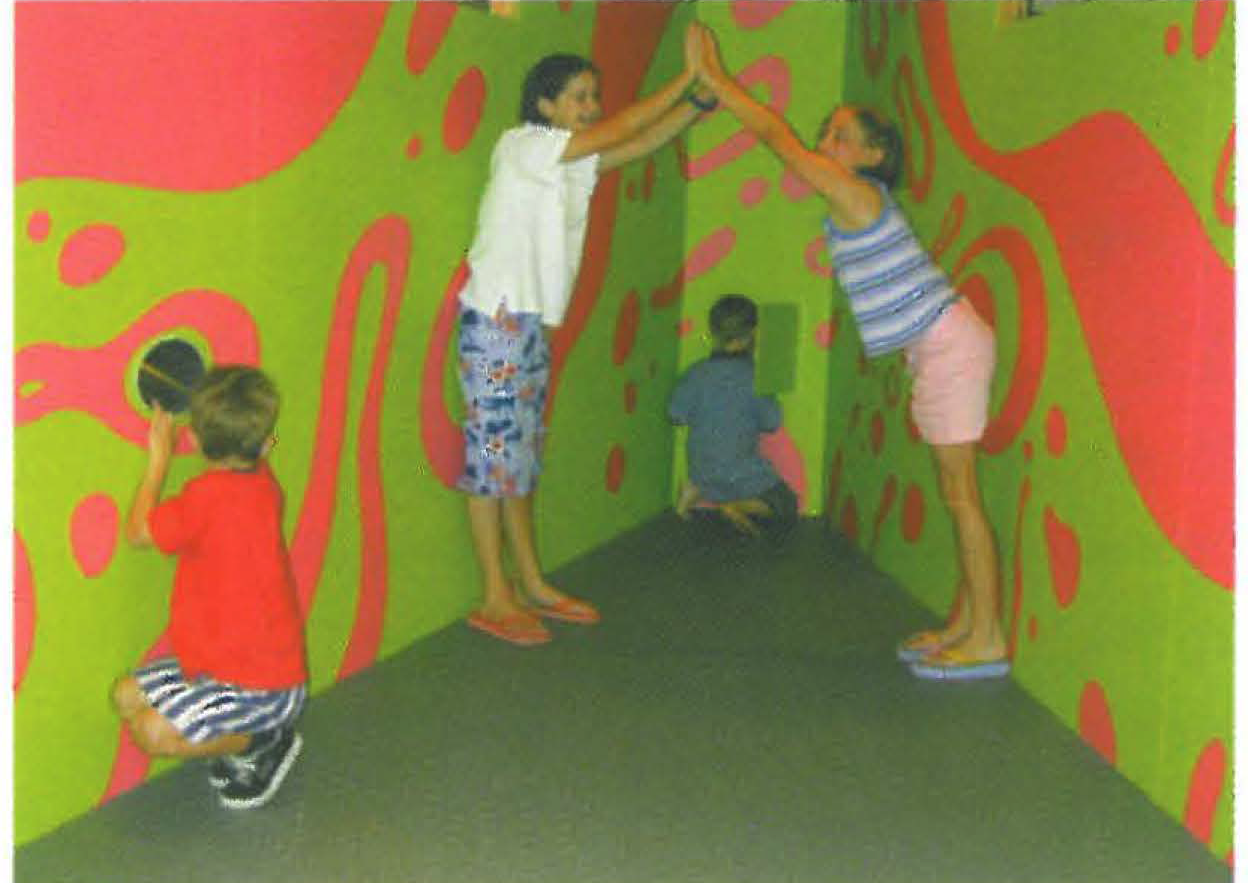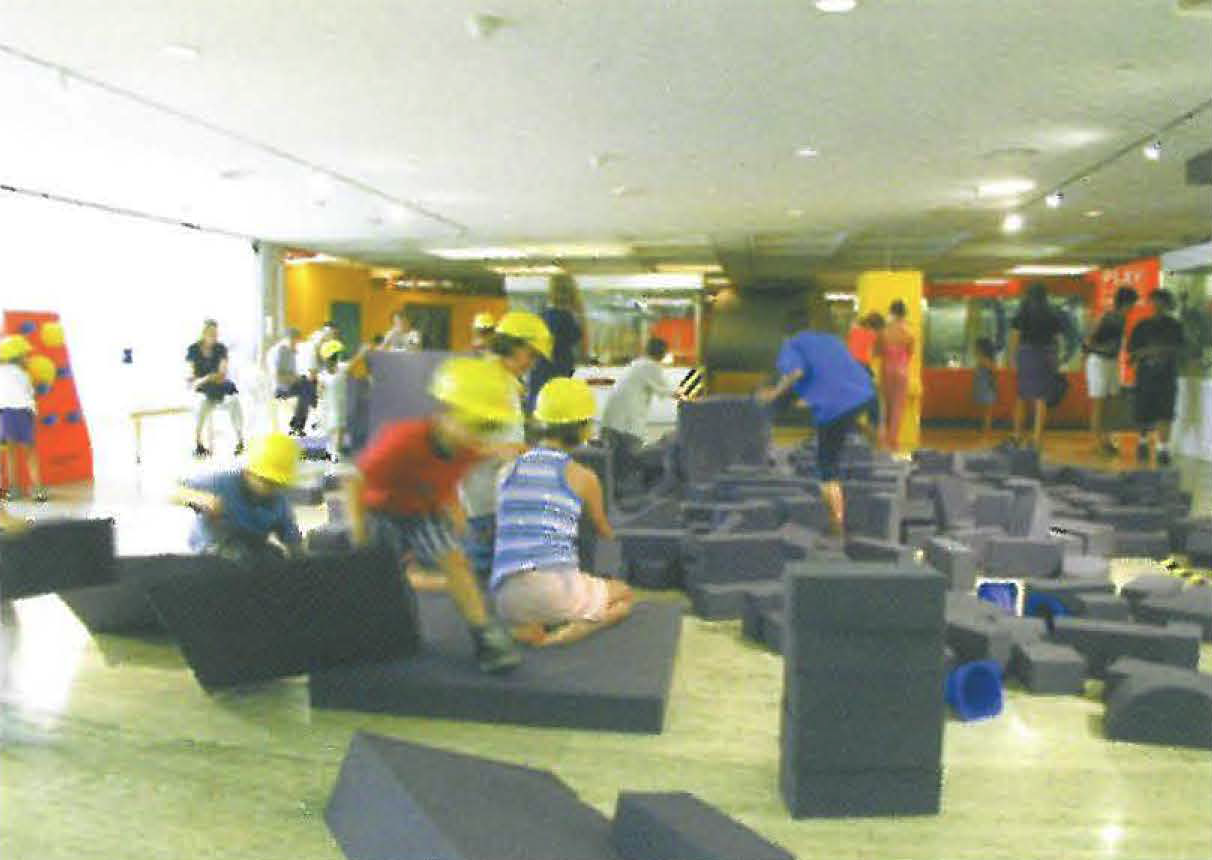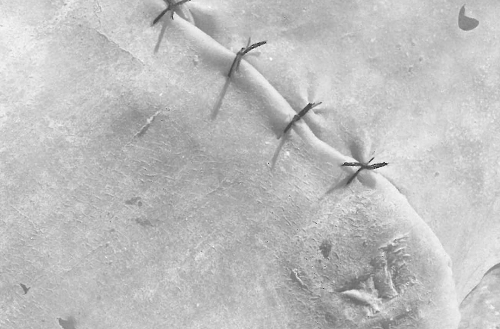
Playfulness is not generally synonymous with the art gallery experience. True, it may be some artists' intention to play with concepts involving cultural history, formal concerns or intellectual gamesmanship, but real play – accompanied by involuntary squeals of delight – is not often encountered within the white walls of our institutions. At the Queensland Art Gallery, Play, the sixth in an ongoing series of exhibitions designed to assure young children and their parents that a trip to the gallery need not be a chore tackles this topic head-on. Drawing on works from the Queensland Art Gallery's Collection, these focussed exhibitions have addressed popular and easily understood subjects such as portraits, monsters, animals, the beach and the 'Kids APT', a component of the most recent Asia Pacific Triennial of Contemporary Art.
Given the topics for which works of art are selected, well-recognised icons are often juxtaposed with unlikely neighbours. Gallery visitors may see a component of Luke Roberts' fantastic Wunderkammer on the same wall as Charles Blackman's Blue Alice, and around the corner an 18th century painting of an archery scene. Play abandons any pretensions to historical chronology, media or stylistic purity. Instead, the works span centuries, cultures, media and style, linked together – at times somewhat loosely – by the theme.
In order to underscore the playful mood, the gallery space was elaborately redesigned to include several specially constructed spaces, themed signage, colourful walls, sound effects and activity stations. Up-ended water tanks were transformed into a broken tunnel, providing a diagonal axis through the gallery. One end housed a puppet show in which children improvised scenarios, their audience seated on large foam seats in the shape of P L A and Y. More often than not the seats were used as trampolines, thus challenging the intended function.

The tunnel provided an irresistible invitation for children to run through, setting off lights and sounds and adding to the general noise level. To one side was a room constructed with sloping floor and angled walls, similar to the sideshow trick that makes you feel as though you were growing larger – a nod to Alice in Wonderland. By far the most popular piece was the construction area where children could build their own cubby house out of foam blocks. Dads in particular found the cubbies a challenging engineering project, resulting in some constructive collaborations.
While the activities were obviously the high point as far as the children were concerned, there were some genuine interactions with works of art, predominantly with the assistance of parents, carers, teachers or the Gallery's Guides. Few children will, it seems, automatically gravitate towards art on the walls (or in a cabinet) even in a children's exhibition with art aimed, both physically and conceptually, at their level, but most will do so when guided through by an adult.

Play was timed perfectly for the summer break when the temperature rises in parallel with parental tempers. Attendances were remarkable during the traditionally quiet period of January, with many visitors happily staying for hours – previously unheard of in my experience with a six-year-old. The exhibition's success lies in the fact that it allows children to enjoy the Gallery on their terms, without expectations or demands of 'proper' behaviour. All the exhibits are secure behind glass, perspex or railing.
The ramifications of this success are manifold. As well as setting a high standard of enjoyment for children in a gallery setting, it arouses an expectation that there is always something for children on at the Gallery. While this is not possible at the moment, it is a very real possibility with QAG's new Gallery of Modern Art extension.
While children's positive experience of the Gallery may increase, many of the Gallery's regular visitors, who seek peace and tranquillity as they contemplate the works of art on display, were not so convinced. This was particularly so in the adjoining galleries, where the noise level, patter of running feet and boisterous physical interaction increased significantly as children brought their newly found enthusiasm for art into the rest of the Gallery. There has also been a criticism of significant works being 'dumbed down' when shown in the context of popular, but not challenging, themes. This may be so, but the overwhelmingly positive response from children, and from parents who can look at works of art without being dragged away with cries of 'I'm bored!' suggests that a temporary departure from 'appropriate' context may not be a bad thing.













